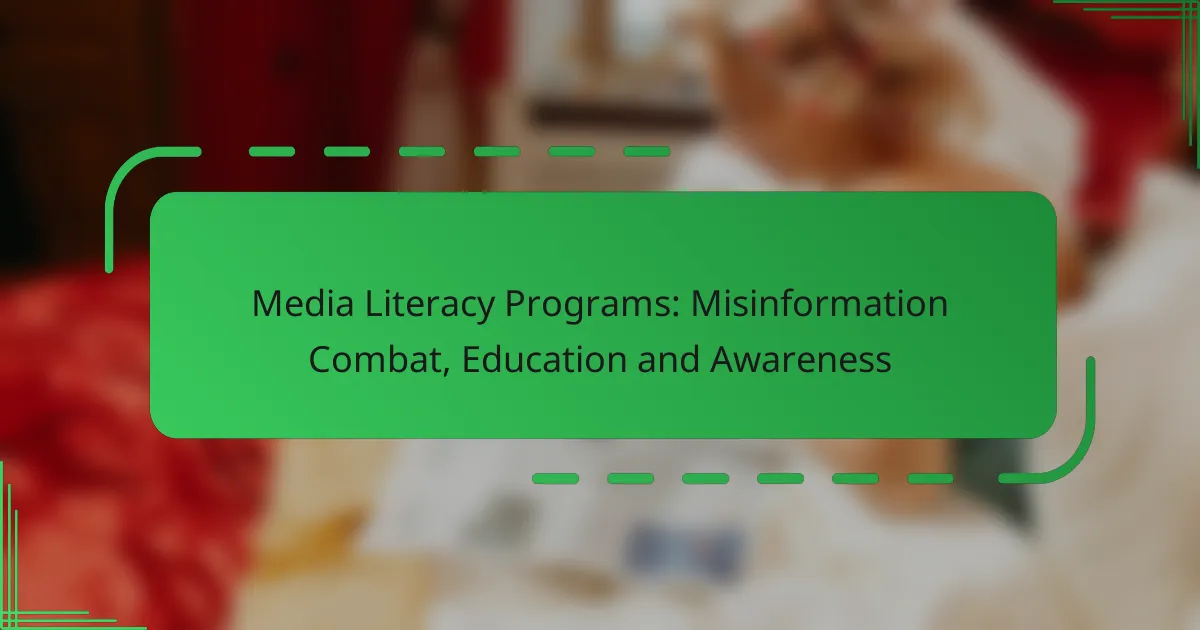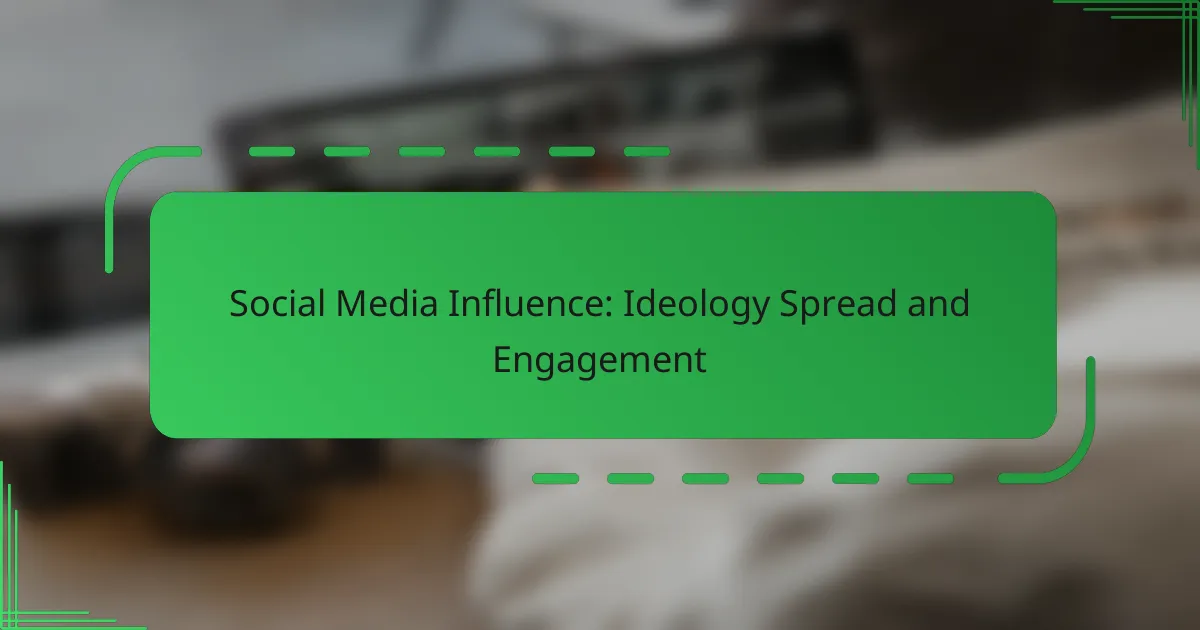Media literacy programs play a crucial role in combating misinformation by empowering individuals with the skills needed to critically assess information sources. By enhancing critical thinking and promoting awareness of media messages, these initiatives foster informed decision-making and help individuals recognize and analyze misinformation in their daily lives.

How can media literacy programs combat misinformation in the United States?
Media literacy programs in the United States can effectively combat misinformation by equipping individuals with the skills to critically evaluate information sources and discern fact from falsehood. These programs focus on enhancing critical thinking, integrating fact-checking resources, collaborating with social media platforms, and fostering community engagement.
Critical thinking skills development
Developing critical thinking skills is essential for individuals to analyze and assess the credibility of information. Media literacy programs often include exercises that encourage questioning the source, purpose, and context of information, helping participants to recognize biases and logical fallacies.
For example, workshops may use real-world scenarios where participants evaluate news articles, advertisements, or social media posts, identifying misleading elements. This hands-on approach reinforces the importance of skepticism and informed decision-making.
Fact-checking resources integration
Integrating fact-checking resources into media literacy programs empowers individuals to verify claims before accepting them as truth. Programs often introduce participants to reputable fact-checking websites, such as Snopes or FactCheck.org, which provide tools to confirm the accuracy of information.
Encouraging the use of these resources can significantly reduce the spread of misinformation. Participants learn to cross-reference information and understand the importance of sourcing, which is crucial in today’s fast-paced media environment.
Partnerships with social media platforms
Collaborating with social media platforms is a strategic approach to combat misinformation. Media literacy programs can work with these platforms to promote educational content and provide users with tools to identify false information.
For instance, social media companies may implement features that flag potentially misleading posts and direct users to educational resources. These partnerships can enhance the visibility of accurate information and encourage responsible sharing practices among users.
Community engagement initiatives
Community engagement initiatives play a vital role in fostering a culture of media literacy. Programs can organize events such as workshops, seminars, and discussion panels that bring together diverse groups to discuss the impact of misinformation.
By involving local organizations, schools, and libraries, these initiatives can reach a broader audience. Engaging the community helps to create a supportive environment where individuals feel empowered to share knowledge and strategies for navigating the media landscape effectively.
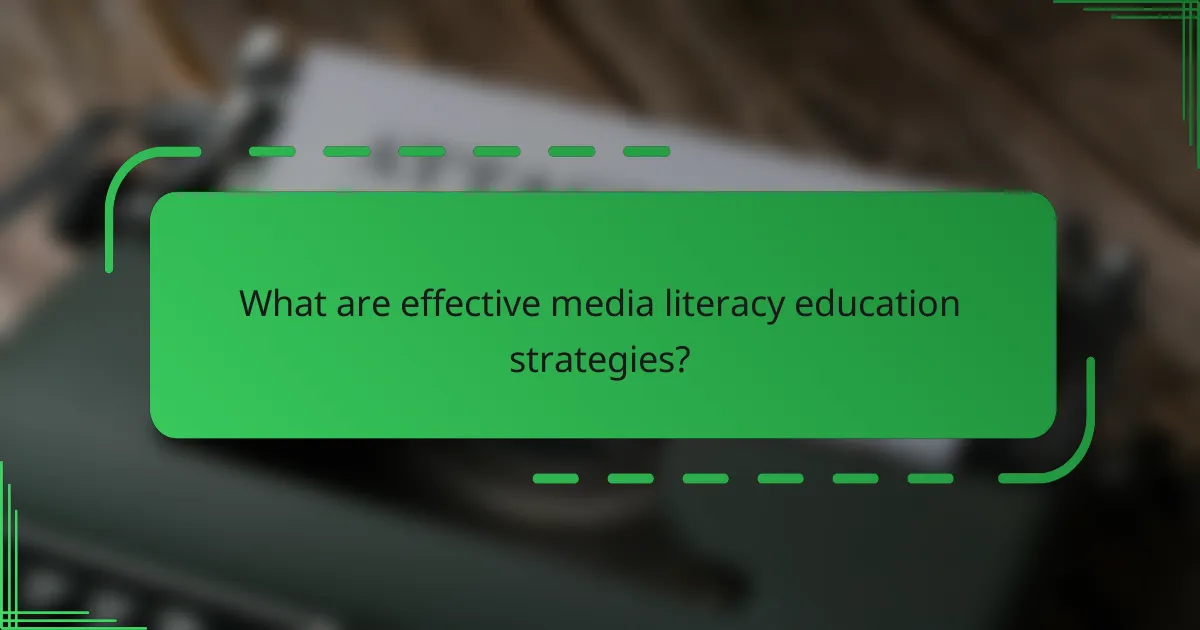
What are effective media literacy education strategies?
Effective media literacy education strategies focus on equipping individuals with the skills to critically analyze and evaluate media content. These strategies can enhance awareness of misinformation and promote informed decision-making in consuming media.
Interactive workshops
Interactive workshops engage participants through hands-on activities that promote critical thinking about media. These sessions often include group discussions, role-playing, and real-world scenarios to help attendees recognize misinformation and understand media bias.
Workshops can be tailored to different age groups and skill levels, making them versatile for schools, community centers, or corporate training. Consider incorporating local case studies or current events to make the content relevant and relatable.
Online courses from organizations like Common Sense Media
Online courses offered by organizations such as Common Sense Media provide structured learning on media literacy. These courses typically cover topics like identifying fake news, understanding digital footprints, and navigating social media responsibly.
Participants can learn at their own pace, making these courses accessible to a wide audience. Many platforms offer free resources, while some may charge a nominal fee for more comprehensive programs.
School curriculum integration
Integrating media literacy into school curricula ensures that students develop critical skills from an early age. This can involve incorporating lessons on evaluating sources, understanding advertising techniques, and recognizing bias in news reporting.
Educators should collaborate with local education authorities to align media literacy programs with national standards. Regular assessments and updates to the curriculum can help maintain relevance as media landscapes evolve.
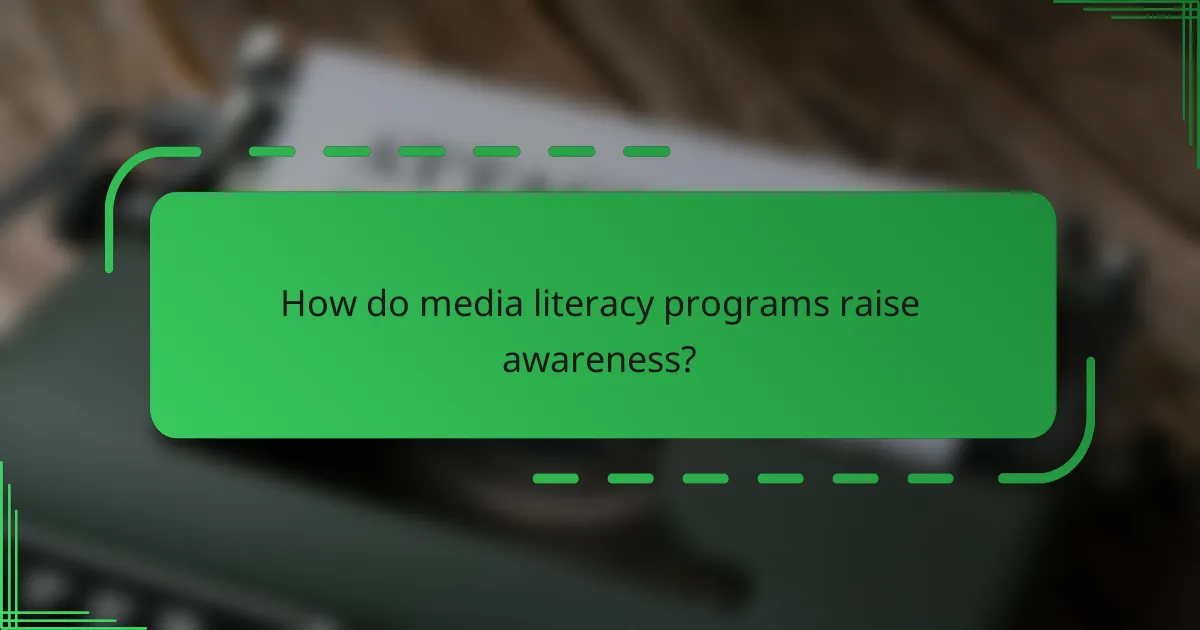
How do media literacy programs raise awareness?
Media literacy programs raise awareness by educating individuals about the nature of media messages and the importance of critical thinking. These initiatives help people recognize misinformation and develop skills to analyze and evaluate the information they encounter daily.
Public campaigns
Public campaigns are essential for spreading awareness about media literacy. They often involve advertisements, informational brochures, and community events aimed at educating the public on recognizing misinformation. For instance, campaigns may use local radio stations or billboards to reach a broad audience.
These campaigns can be tailored to specific demographics, ensuring that the messaging resonates with various community groups. Engaging storytelling and relatable examples can enhance the effectiveness of these campaigns.
Collaboration with local libraries
Local libraries play a crucial role in promoting media literacy through workshops and resource sharing. By partnering with libraries, media literacy programs can provide access to materials that help individuals understand media consumption better. Libraries often host events that teach critical thinking skills and how to discern credible sources.
Additionally, libraries can serve as safe spaces for community discussions on media-related topics, fostering an environment where individuals feel comfortable asking questions and sharing experiences.
Use of social media for outreach
Social media platforms are powerful tools for outreach in media literacy programs. These platforms allow organizations to share informative content quickly and engage with a younger audience that frequently consumes media online. Posts can include tips for identifying misinformation, links to educational resources, and interactive quizzes to assess media literacy skills.
Effective use of hashtags and collaborations with influencers can amplify the reach of these messages, making them more accessible to diverse populations. Regular engagement through live sessions or Q&A formats can also enhance understanding and retention of media literacy concepts.
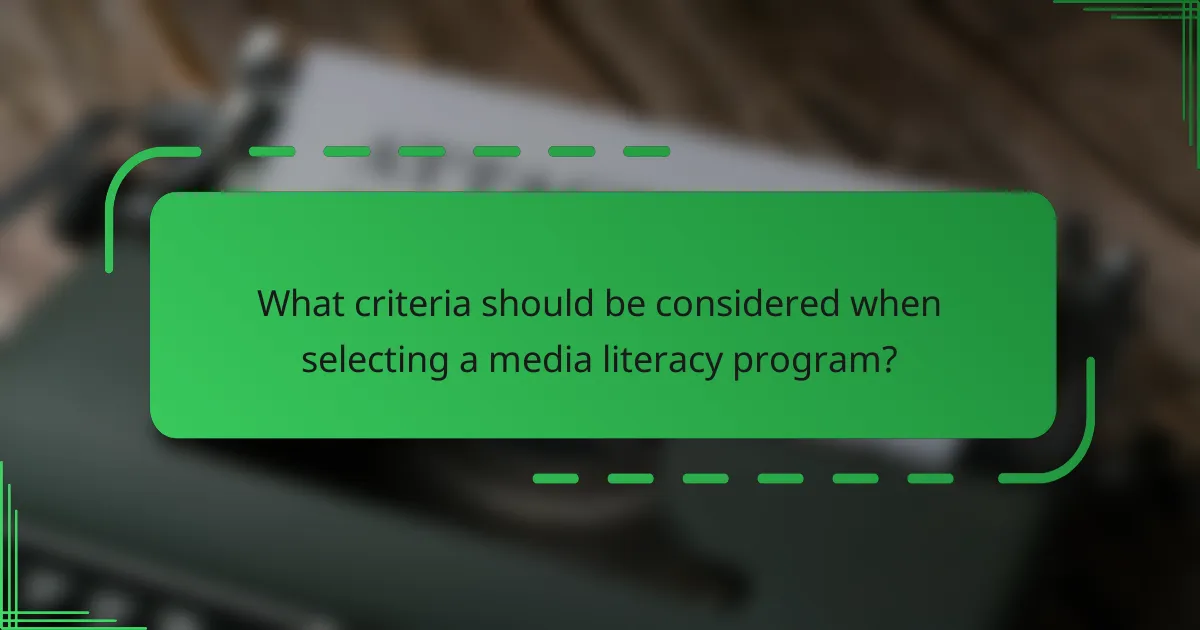
What criteria should be considered when selecting a media literacy program?
When selecting a media literacy program, it’s essential to consider the specific needs of the target audience, the effectiveness metrics of the program, and the availability of resources. These criteria ensure that the program is relevant, impactful, and sustainable.
Target audience needs
Understanding the target audience’s needs is crucial for a successful media literacy program. Different demographics, such as children, teenagers, or adults, have varying levels of media exposure and comprehension skills. Tailoring the content and delivery method to these specific groups enhances engagement and learning outcomes.
For example, programs aimed at younger audiences might incorporate interactive elements like games or videos, while adult programs could focus on critical analysis of news sources. Assessing the audience’s existing knowledge and interests can guide the development of relevant materials.
Program effectiveness metrics
Evaluating the effectiveness of a media literacy program involves measuring its impact on participants’ understanding and skills. Common metrics include pre- and post-program assessments, participant feedback, and long-term retention of knowledge. These metrics help determine if the program meets its educational goals.
Consider using a combination of qualitative and quantitative data to assess effectiveness. For instance, surveys can gauge participant confidence in identifying misinformation, while tests can measure knowledge gains. Regularly reviewing these metrics allows for ongoing improvements to the program.
Availability of resources
The availability of resources, including funding, materials, and trained personnel, plays a significant role in the implementation of a media literacy program. Programs should assess what is needed to deliver high-quality education effectively, from instructional materials to technology and facilitators.
For instance, a program with limited funding might focus on free online resources and community partnerships, while a well-funded initiative could offer workshops and printed materials. Ensuring that resources align with program goals is essential for sustainability and effectiveness.
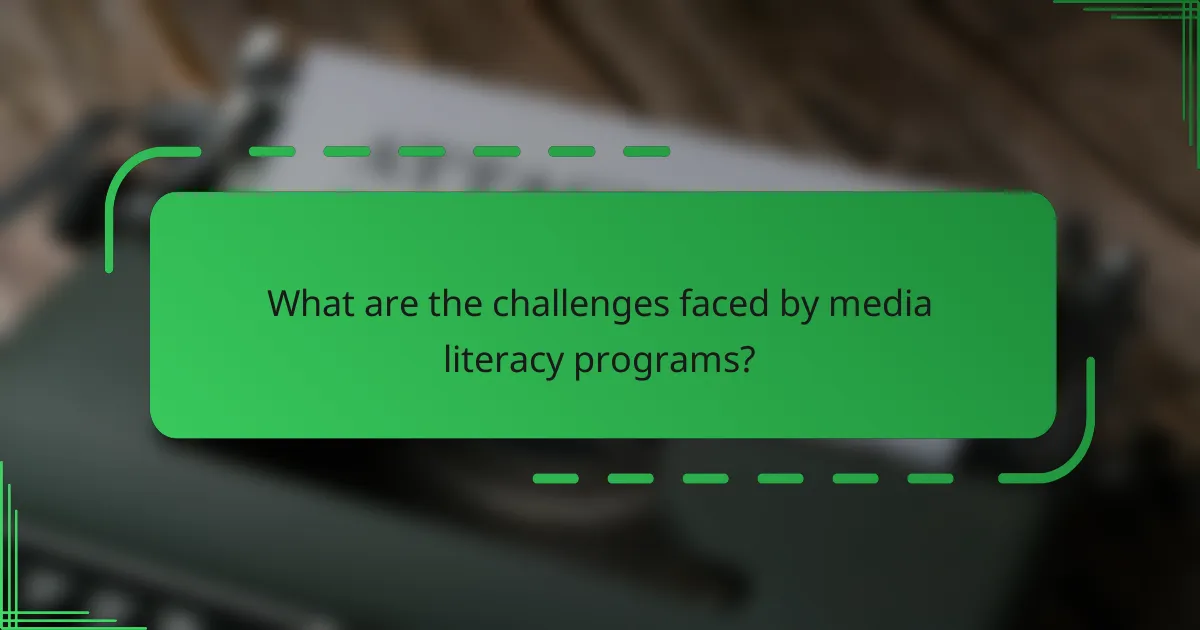
What are the challenges faced by media literacy programs?
Media literacy programs encounter several challenges that hinder their effectiveness in combating misinformation. Key issues include funding limitations, varying levels of public engagement, and the rapid evolution of digital media landscapes.
Funding limitations
Funding limitations are a significant barrier for many media literacy programs. Without adequate financial resources, these initiatives struggle to develop comprehensive curricula, hire qualified instructors, and reach a wider audience. Many programs rely on grants or donations, which can be unpredictable and insufficient.
To address funding challenges, organizations can explore partnerships with local businesses, educational institutions, or government agencies. These collaborations can provide additional resources and support, ensuring that programs remain sustainable and impactful.
Additionally, seeking small-scale grants or community fundraising initiatives can help supplement existing budgets. Programs should prioritize transparency in their funding efforts to build trust and encourage community involvement.
